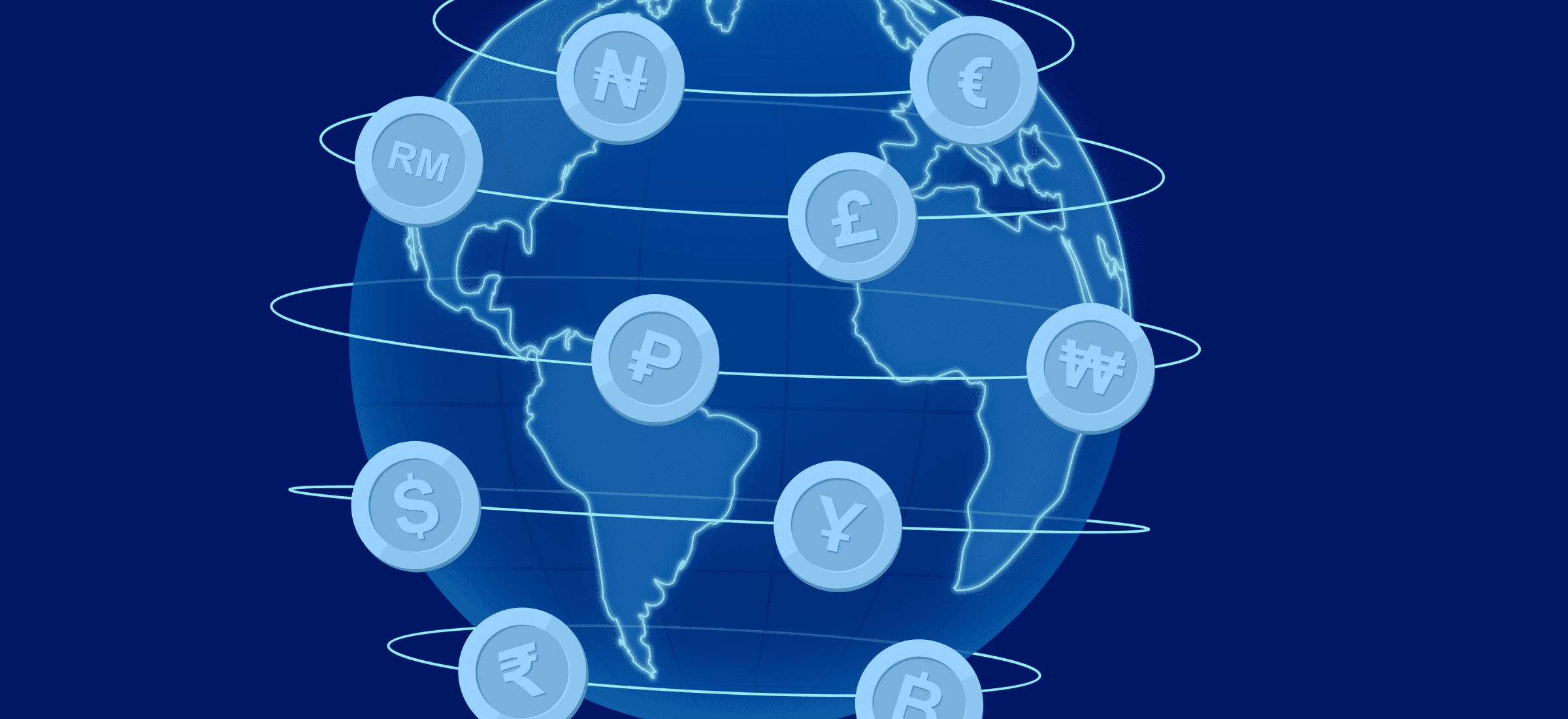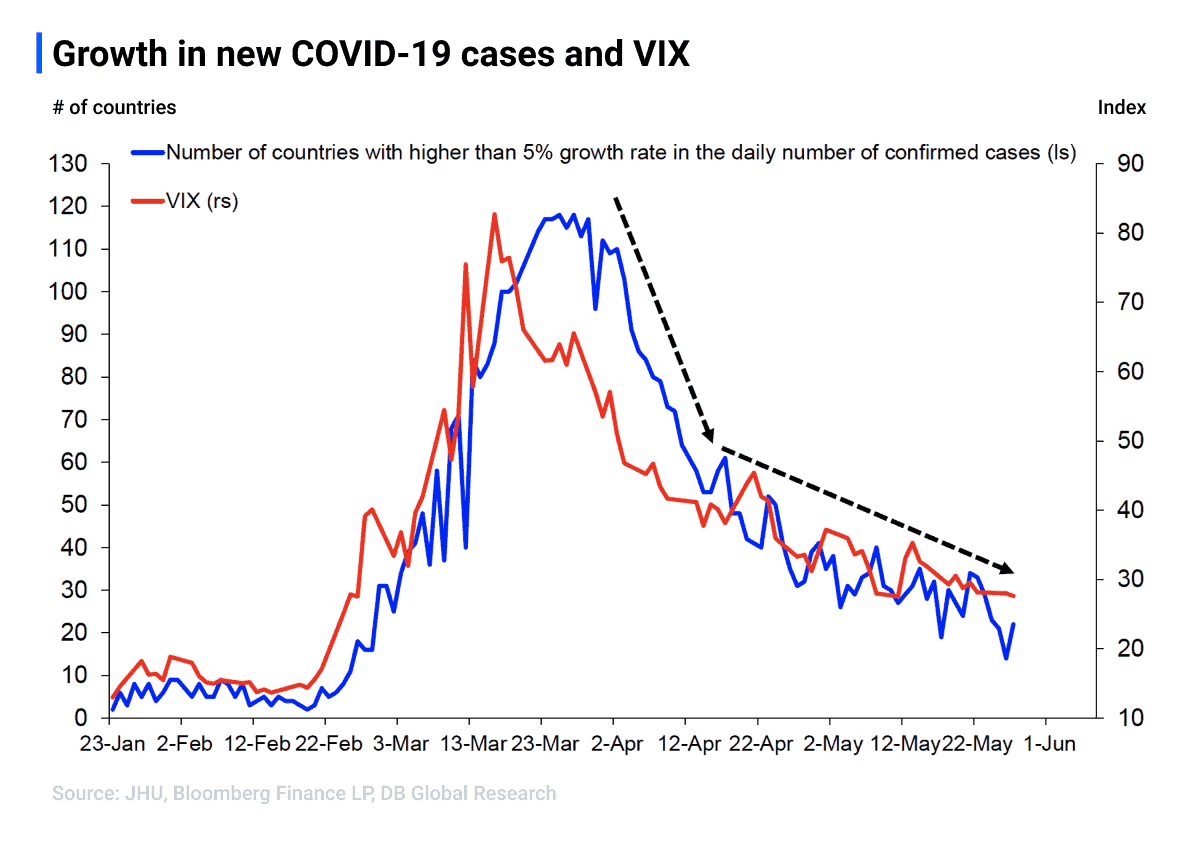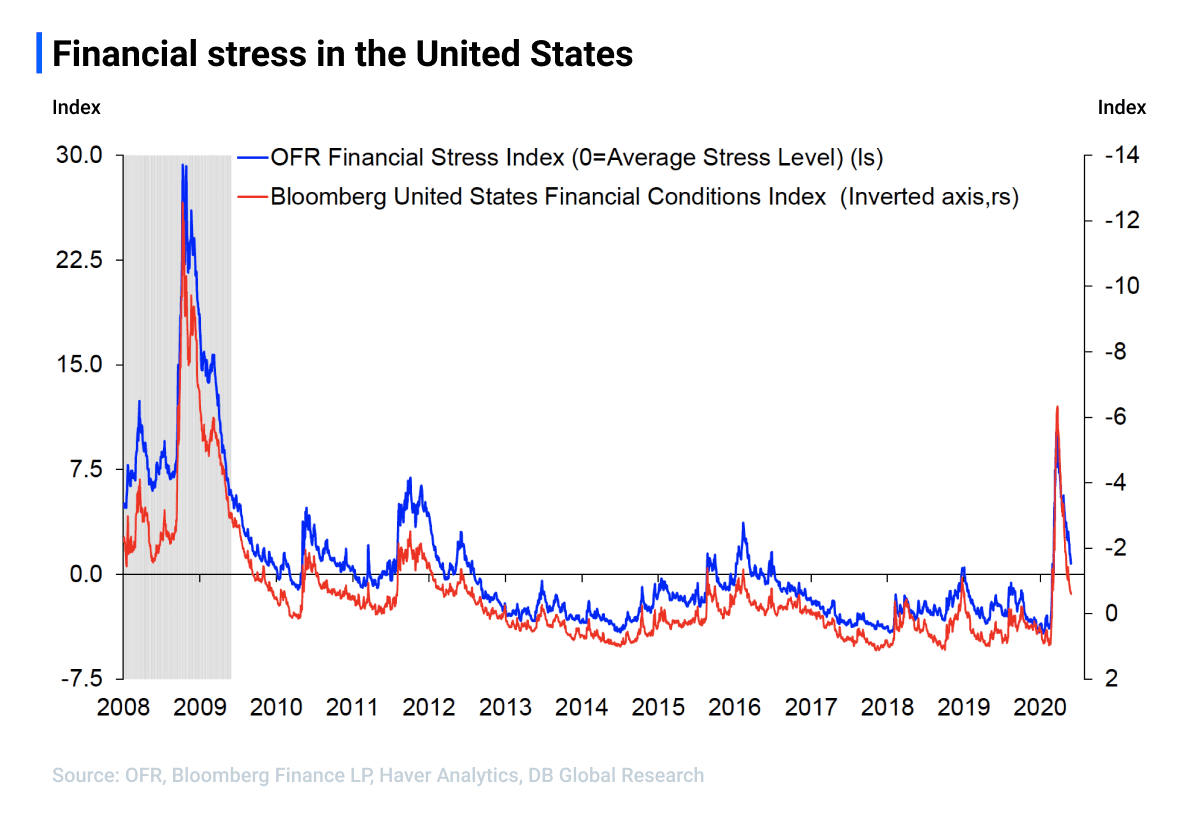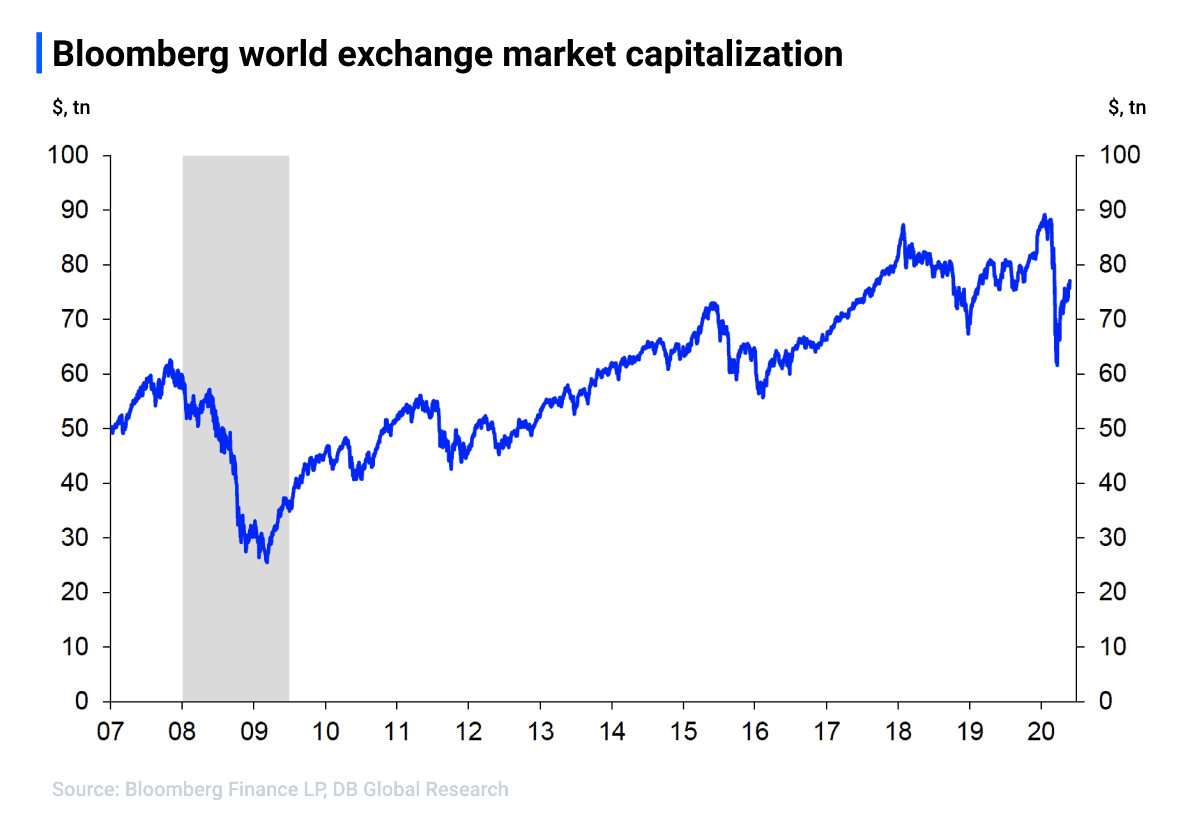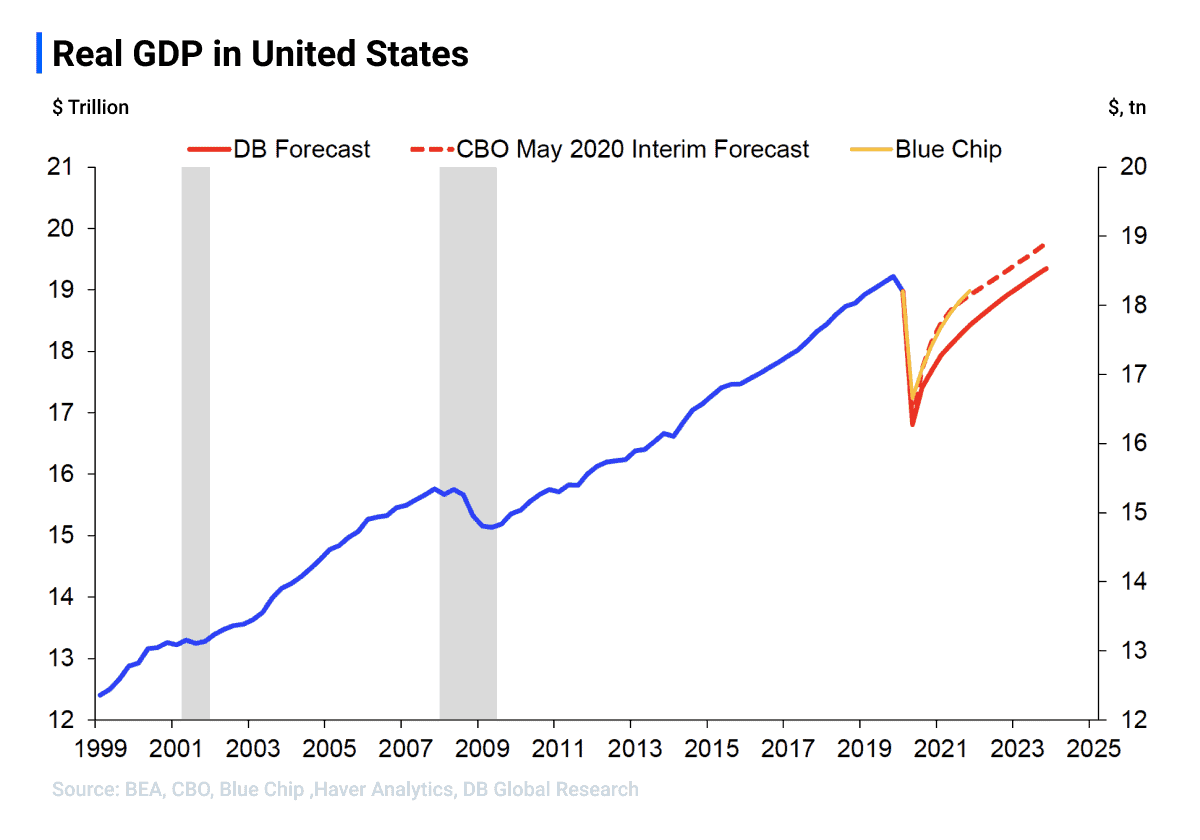Since the beginning of the coronavirus pandemic, companies have speculated about the shape of recovery at record rates. This week, we sat down with Torsten Slok, Chief Economist at Deutsche Bank Securities to discuss the outlook for financial markets, hoping to answer the ultimate question: “what will the shape of recovery actually look like?”
According to Slok, there are several factors that heavily weigh into how the global economy will recover, starting with the flattening the curve and stabilizing financial markets. Read the highlights below.
If you are interested in reading more Deutsche Bank research, login to AlphaSense, or start a free trial. To access Torsten Slok’s full presentation, along with more AlphaSense webcasts, please explore our Expert Briefing Series.
1. The virus curve is flattening: “the trend is your friend”
According to Slok, if we want the global economy to stabilize, then we must flatten the curve. Looking at the data, we can now say that the worst is behind us–which you can see if you look at the number of coronavirus cases vs. the CBOE Volatility Index.
As the data demonstrates, we currently have a grasp on the virus and, from a global health perspective, are moving in the right direction. However, even looking at the rate of infection and the Volatility Index, we are left with one unsolved question: what does this mean for the state of the global economy?
One way to dig into the data is to examine specific countries–it’s important that we look at them from an asset management perspective and a business management perspective, specifically: which countries are more advanced and have already opened up? Sweden, for example, never closed schools, or workplaces, or stores, but the curve is very similar to the United States. While Italy, which closed down completely, is more than two weeks ahead of the United States in terms of flattening the curve.
Over time, we will see if a slow approach to reopening is safe, effective, and beneficial for financial markets and how other countries compare.
For a full analysis of the health front, watch Torsten Slok’s full webcast by visiting our Expert Briefing Series.
2. Financial markets are stabilizing, but recovery is far off
Now that the virus curve is flattening, many people are asking “have financial markets bounced back?” As you can see from the chart below, at the pandemic’s peak in March and April, the U.S. economy was not at the same level of financial stress that it was in 2008-2009. Since April, financial stress has decreased, but not recovered fully.
Financial stress in the United States peaked between March and April, but it is nowhere near the stress of 2008-2009. Although not fully recovered, the United States is slowly recovering back to pre-February metrics.
In fact, according to the Bloomberg world exchange market, the global market lost close to $30 trillion within weeks, but as the Central Bank started to provide loans to small businesses, credit guarantees, loan guarantees, and more, financial markets started to recover.
What is the total value of the global stock market? Before this crisis, the stock market peaked at $90 trillion globally. When the pandemic hit, the global stock market tumbled $30 trillion, bottoming out at $60 trillion. Although we are not back to where we were, things have been normalizing.
Overall, it appears that we are moving in the right direction, from both a health perspective and from a financial market perspective. This leaves us with one very important, and unsolved problem: the state of the global economy.
For the full breakdown of financial markets, watch Torsten Slok dig deeper into the global economy.
3. The recovery curve looks like a deep V and is dependent on consumer behavior
The coronavirus pandemic is a crisis with unique features, some of which are the behavioral changes driven by health concerns. As of now, the biggest impacts on global economic recovery can be categorized into Household, Corporate, and Government sectors.
With new coronavirus-driven behavioral changes, there are new and random factors that investors aren’t prepared for (for example: the success of a face-to-face business vs. online businesses.) Now, investors can’t do a simple screening and invest in traditional stocks, because there is a lot more homework needed to review how Household, Corporate, and Government behavioral changes will impact certain stocks.
Consumption is a Huge Factor… Particularly for Those 65+
One of the biggest challenges of quantifying recovery comes from the Household sector, primarily because huge populations are likely to stay home. If the virus results in older people staying home until a vaccine is created, for example, that will change the consumption patterns for older individuals.
In the United States, people over the age of 65 account for 20% of consumer spending, while consumers 55 and older account for more than 40%. These populations are essential to return to normalcy–and, if they aren’t going out to shop for goods, or going to restaurants, there will be a significant impact on recovery.
Unemployment may change liquidity to solvency
Right now, recovery may look like a deep “V” shape followed by a slow recovery, which will be further exacerbated by high unemployment rates.
Deutsche Bank, CBO, and Blue Chip are all anticipating a deep drop in GDP; however, the “V” is so deep that it is going to take much longer to get back to the level that we were at in Q4 2019 and Q1 2020.
In 2009, the unemployment rate peaked at 10%. By Q3 2020, unemployment will be anywhere between 16% to 19.1%. By the end of 2020, unemployment will still remain above 10%.
While some experts were originally speaking about the coronavirus as a liquidity crisis, if the unemployment rate remains above 10% going into 2021, we may transition from a liquidity crisis to a solvency crisis.
As more and more people fall behind on their auto loans and credit cards, delinquency rates will be higher–and the same thing may occur in the corporate sector.
The global economic outlook
To fully understand the impact of coronavirus on the global economy, we must monitor the virus curve, financial markets, and unemployment.
What will politicians do if bankruptcies and loan delinquencies become more common? Will we see more support from Washington D.C. by helping consumers, small businesses, and the corporate sector–particularly if there is a risk from this pandemic turning from a liquidity crisis into a solvency crisis? Time will tell.
If you are interested in reading more Deutsche Bank research, login to AlphaSense or start a free trial. To watch Torsten Slok’s full presentation, including a full Q&A section, visit The Shape of Recovery: Outlook for the Global Economy.
If you are interested in attending more AlphaSense webcasts, please explore our Expert Briefing Series.
.png)

